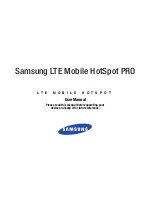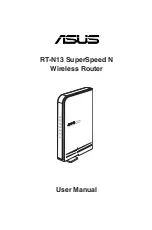
78
Network Parameters
radio. The RTS and CTS packets contain a reservation time to notify other radios (including hidden nodes) that the
medium is in use for a specified period. This helps to minimize collisions. While RTS/CTS adds overhead to the radio
network, it is particularly useful for large packets that take longer to resend after a collision occurs.
RTS/CTS Medium Reservation is an advanced parameter and supports a range between 0 and 2347 bytes. When set
to 2347 (the default setting), the RTS/CTS mechanism is disabled. When set to 0, the RTS/CTS mechanism is used
for all packets. When set to a value between 0 and 2347, the Access Point uses the RTS/CTS mechanism for packets
that are the specified size or greater. You should not need to enable this parameter for most networks unless you
suspect that the wireless cell contains hidden nodes.
Wireless (802.11b)
You can configure and view the following parameters within the
Wireless Interface Configuration
screen for an
802.11b radio:
NOTE:
You must reboot the Access Point before any changes to these parameters take effect.
•
Physical Interface Type:
This field reports: “802.11b (DSSS 2.4 GHz).” DSSS stands for Direct Sequence Spread
Spectrum; this is the name for the radio technology used by 802.11b devices.
•
MAC Address:
This is a read-only field that displays the unique MAC (Media Access Control) address for the
Access Point’s wireless interface. The MAC address is assigned at the factory.
•
Network Name (SSID):
Enter a Network Name (between 1 and 31 characters long) for the wireless network. You
must configure each wireless client to use this name as well. See
Configure Network Names for the Wireless
Interfaces
for more information.
•
Auto Channel Select:
The AP-2500 scans the area for other Access Points and selects a free or relatively unused
communication channel. This helps prevent interference problems and increases network performance. By default
this feature is enabled. However, if you are setting up a Wireless Distribution System (WDS), it must be disabled.
See
Wireless Distribution System (WDS)
for more information.
•
Frequency Channel:
When Auto Channel Select is enabled, this field is read-only and displays the Access Point’s
current operating Channel. When Auto Channel Select is disabled, you can specify the Access Point’s operating
Channel. If you decide to manually set the unit’s Channel, ensure that nearby devices do not use the same
frequency (unless you are setting up a WDS). Available Channels vary based on regulatory domain. See
802.11b
Channel Frequencies
.
•
Distance Between APs:
Set to
Large
,
Medium
,
Small
,
Microcell
, or
Minicell
depending on the site survey for
your system. By default, this parameter is set to
Large
. The distance value is related to the
Multicast Rate
(described next). In general, a larger distance between APs means that your clients operate a slower data rates
(on average). See
Distance Between APs
for more information.
















































